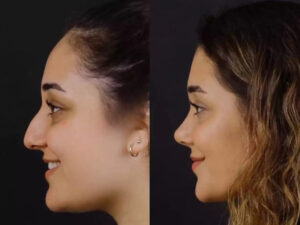A hair transplant is a treatment that can change a person’s life by providing a permanent, natural-looking remedy for hair loss. In addition to the surgeon’s skill, post-transplant care and patience are also critical to the procedure’s success. Knowing the timeframe for hair growth and what to expect following the treatment is essential for anyone looking for the best hair transplant in Jaipur. Understanding what to anticipate at each stage of the gradual process of hair regrowth will allay worries and promote a speedy recovery.
Hair Growth Timeline After Transplant
The journey to full hair regrowth after a transplant typically follows a structured timeline. While individual experiences may vary, the general progression remains the same.
First Two Weeks: Healing and Initial Shedding
- Immediate mild redness, swelling, and scabbing are symptoms that oftentimes develop at the site of transplant.
- To accelerate healing and avoid infections, patients are bound to strictly follow post-operative care guidelines.
- The time span of 10 to 14 days after surgery is when shock loss commences, wherein the hair that has just been transplanted begins to fall. This indicates that hair follicles are temporarily in a rest phase. This is an expected and normal step in the procedure.
One to Three Months: Dormant Phase
- This is the duration of time at which the scalp looks the same as it had prior to the treatment since the implanted follicles are still dormant.
- This phase indicates that for the effective implantation of hair follicles into the scalp, the treatment is not pleasant per se.
- Some patients experience minor discomfort or itching as an indication that these transplanted follicles are healing internally.
Three to Six Months: Initial Hair Growth Begins
- It’s in month 3 that the first timely hair growth is observed.
- The new hairs may start growing in a thin, delicate layer and may have an uneven texture.
- The density starts to come to view, with hair starting to look more organic in the way the months continue.
- During this period, patients should keep up a healthy care of their hair in order to promote hair development. Galta Hair Restoration offers the best hair transplant procedures and care.
Six to Nine Months: Significant Growth and Thickness
- Between 60 and 70 percent of the transplanted hair has grown out by this point.
- Both the thickness and growth rate of the hair begin to rise.
- Significant improvements in texture and density enable patients to style their hair in a more organic way.
- Regular maintenance and feeding, such as a healthy diet and mild hair care techniques, improve the outcomes.
Nine to Twelve Months: Full Growth and Maturity
- Patients are able to observe the ultimate results of the hair transplant around the one-year mark.
- Full thickness, natural texture, and ideal density are all attained by the hair.
- Any initial asymmetry in growth is corrected, and the transplanted hair becomes a seamless part of the natural hair.
- Most people don’t notice any aftereffects from the surgery and may comfortably enjoy their new, thicker hair.
Factors Affecting Hair Growth After Transplant
Although the timetable offers a broad guideline, a number of factors affect the rate and caliber of hair regrowth:
1. Individual Healing Process
- Every patient has a unique pace of scalp healing, which influences how long it takes for new hair to develop.
- The thickness and density of hair are influenced by genetics.
2. Post-Transplant Care
- Complications can be avoided by following aftercare guidelines, such as avoiding excessive sun exposure and using recommended shampoos.
- Scratching or picking at scabs should be avoided, and the scalp should be handled gently.
3. Lifestyle and Nutrition
- A nutritious diet high in proteins, vitamins, and minerals promotes stronger and quicker hair development.
- Improving blood circulation to the scalp is facilitated by abstaining from smoking and excessive alcohol use.
4. Quality of the Hair Transplant Procedure
- The results are greatly influenced by the surgeon’s expertise and experience.
- Cutting-edge methods like FUE (Follicular Unit Extraction) produce better results with less scarring.
Expectations After Hair Transplant
A positive post-transplant experience is ensured by having reasonable expectations. Patients should bear the following in mind:
- Patience is Key: It takes a while for hair to return, and after a year, the full effects are apparent.
- Hair Texture Changes: New hair may start out thinner but eventually thickens.
- Fuller, Natural Look: After a year, the transplanted hair will blend in perfectly with the natural hair.
Conclusion
Being aware of the timeframe for natural hair development following a transplant aids in controlling expectations and guaranteeing a stress-free recuperation. The effects are rewarding and long-lasting, even though the procedure takes time. A fuller, healthier head of hair can be enjoyed by anyone with the right maintenance, perseverance, and professional advice. If you want a dependable and expert option, think about getting your hair transplant in Jaipur from skilled professionals who can produce results that are long-lasting and natural.






